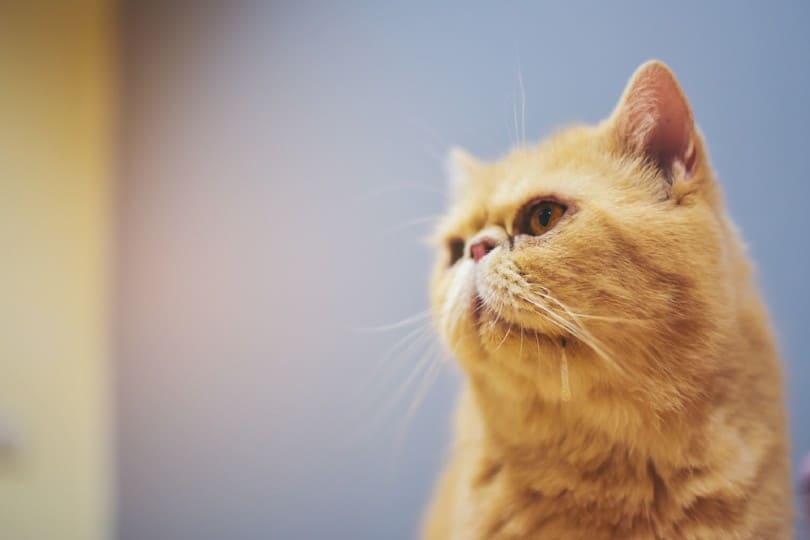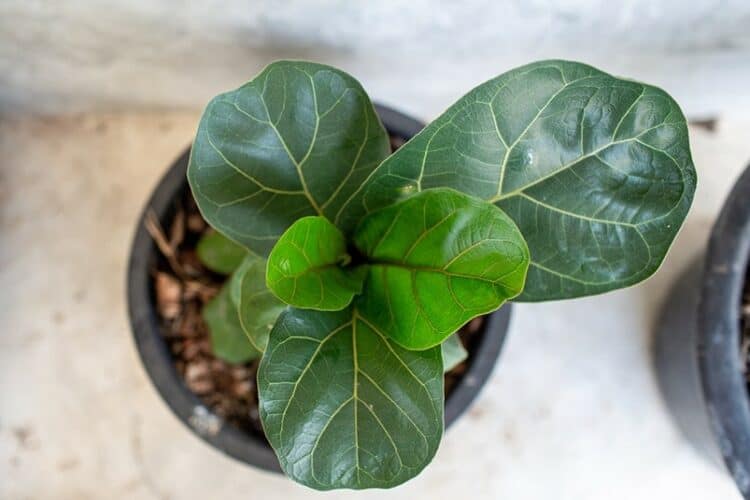The fiddle leaf fig is one of the most beautiful houseplants. Their huge leaves can transform any room of your home into a jungle. But is it safe to have a fiddle leaf fig if you’re a cat owner?
Unfortunately, this house plant is one of many that are toxic to pets, namely cats and dogs. Read on to learn more about this plant, what causes its toxicity, and what to do if your cat eats part of it.
Is the Fiddle Leaf Fig Toxic for Cats?
Fiddle-leaf figs, sometimes also called heartleaf philodendron or panda plants, are toxic to both cats and dogs. The reason behind their toxicity is insoluble calcium oxalates.
Every piece of the plant could cause harm to your cat. The leaves and stems of the plant contain minuscule crystals that come from toxic calcium oxalate. The crystals have very sharp edges that can not only hurt your cat’s mouth and throat but their stomach and intestinal tract as well. Even your cat’s skin can blister if it comes into contact with the crystals.
According to the University of California, there are four classes of toxicity in plants. Fiddle-leaf figs fall into the fourth class, where the ingestion or physical contact with the plant is unlikely to cause death but can cause painful side effects.
What Are the Symptoms of Fiddle-Leaf Fig Poisoning?
If you see your cat gnawing at your plant or have clear evidence that he’s been eating at it (such as chew marks on the leaves or stems), you’ll want to check on your cat right away and keep an eye on him.
You may notice them pawing at their mouths or excessively drooling if they are experiencing discomfort from the sharp crystals. They may appear to be having problems swallowing.
They might also be scratching or biting at their fur or skin if they’ve rubbed up on your plant and gotten the sap on themselves.
If they’ve ingested any part of your plant, gastrointestinal issues are likely to occur in the form of diarrhea or vomiting. This is your cat’s body trying to remove the toxins in any way possible.

What Do I Do If My Cat Ate My Fiddle-Leaf Fig?
In most cases, fiddle-leaf fig poisoning symptoms are very mild and won’t end in death (unless eaten in very large amounts). However, that doesn’t mean you should take a lackadaisical approach to this situation. The amount and severity of symptoms your cat experiences will depend upon how much they’ve eaten. Never assume you know how much they’ve ingested, as they could have swallowed much more than is evident by looking at your plant.
If you know your cat has eaten some of your plants or they’re showing symptoms of doing so, remain calm. Cats are extremely intuitive little guys, and studies even show that they can pick up on our emotional cues. If you’re running around screaming or crying, you’re likely to stress out your cat, which won’t be beneficial for either of you.
Since you know that this plant is toxic in some capacity, you should call or visit your vet for their professional opinion. Gather as much information as you can before making the call, such as how much approximately you think your cat may have eaten, when they ate it, and what their current symptoms are. You can also try calling the ASPCA Animal Poison Control. You can reach them by calling (888) 426-4435.
Your vet will likely suggest flushing out your cat’s mouth with water and may even prescribe a medication to induce vomiting. You should never try to induce vomiting on your own, however.
Final Thoughts
Fiddle-leaf figs are a beautiful plant that can brighten up your home, but they’re best kept in spaces your cats cannot access. If you must have one of these plants, keep them in a separate room with the door closed. While it is unlikely your pet would die from eating or coming into contact with your fiddle-leaf fig, it’s better to err on the side of caution.
Featured Image Credit: Shutterstock














